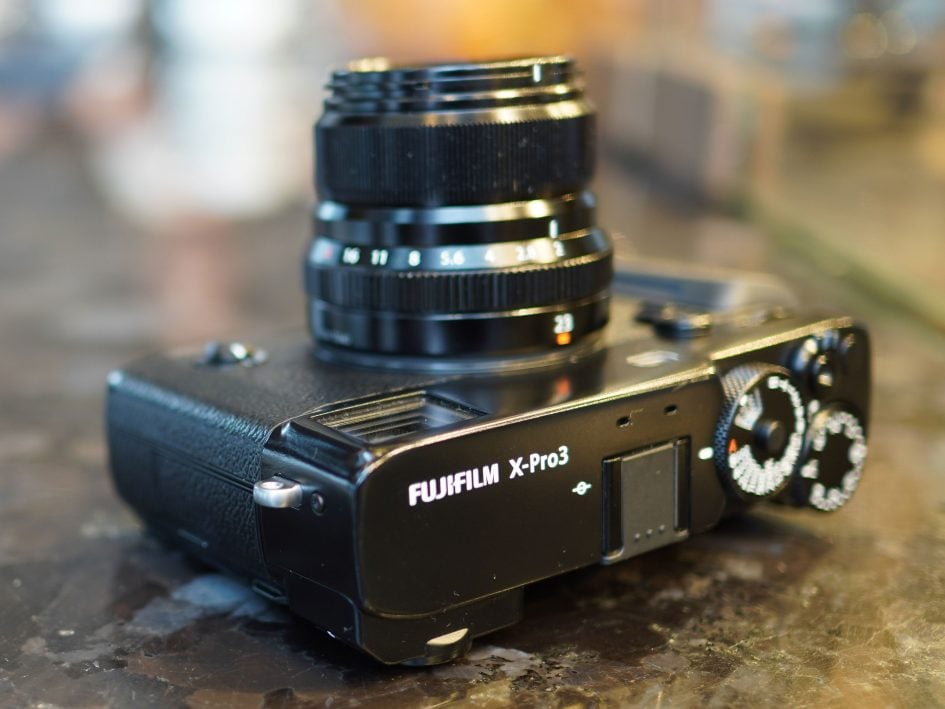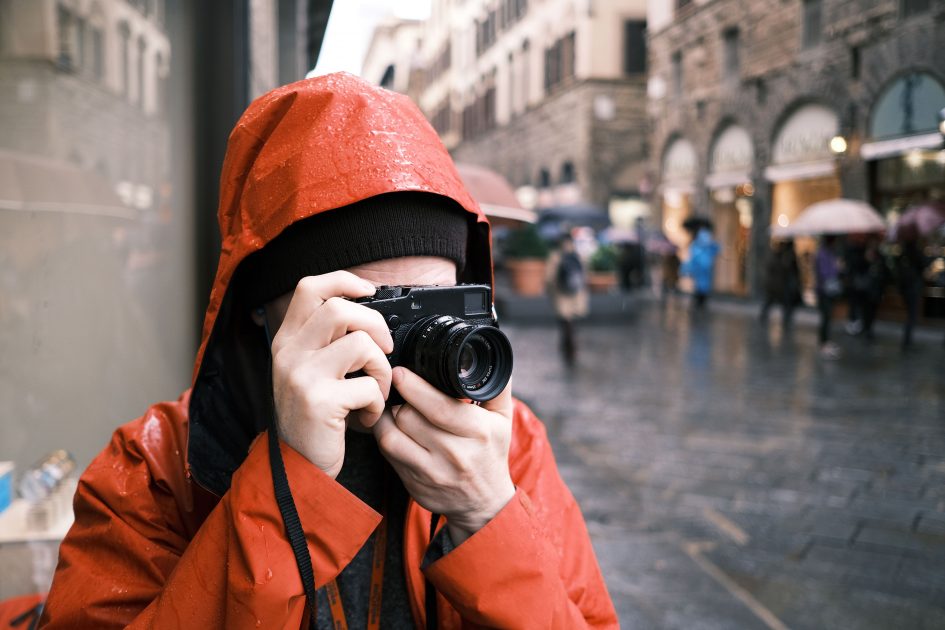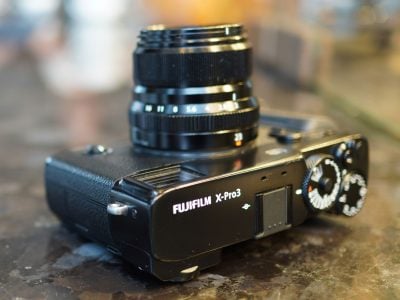Fujifilm X-Pro 3 review
-
-
Written by Gordon Laing
Verdict
Fujifilm’s X-Pro3 upgrades its much-loved rangefinder series with the expected sensor and processor from the X-T3 and X-T30, improves the build quality with titanium top and bottom panels, offers an optional coating for greater scratch resistance, enhances the cunning hybrid viewfinder in both its optical and electronic modes, adds a raft of processing additions including broader monochrome adjustments, and throws in neat focus bracketing and focus limiter options.
The core photo and video quality may be inherited from the X-T3 and X-T30, but the addition of the new Classic Negative Film Simulation, the broader Monochrome adjustments, not to mention the HDR Plus mode all allow you to create some different-looking images from the earlier bodies. Whether these enhancements will come with firmware updates to the XT series is unknown at the time of writing, but right now they’re exclusive to the X-Pro3. Somewhat predictably, Classic Negative has now become my new favourite Film Simulation.
In terms of the viewfinder, Fujifilm has given and take-eth away: on the plus side, the optical view is now noticeably larger than before and the electronic view employs a more detailed panel. On the downside, the X-Pro3 loses the dual magnification in the optical view of its predecessor, which means when you fit a 35mm lens or longer, the framing guide just gets smaller. While this sounds like an annoying downgrade, it’s important to compare the viewfinders of the X-Pro2 and X-Pro3 side-by-side: when using a 35mm lens, the X-Pro3’s framing guide in the optical view may be smaller proportionally, but the fact the viewfinder is bigger to start with compensates to some degree. Sure, the frame remains larger to your eye on the X-Pro2 than the X-Pro3 when both are fitted with a 35mm lens, but not by as much as you may have originally thought, and if you fit a 23mm, the view is noticeably larger on the X-Pro3. I personally feel this compromise is beneficial overall, but there’s no getting away from the fact the focal length sweet-spot for the X-Pro3 is 23mm.

While that sounds like a limitation, I’m not too concerned since 23mm is going to be the lens you’ll typically use the most for street and general shots on the X-Pro3, especially when shooting with the optical viewfinder. Indeed while I had access to multiple lenses when testing the X-Pro3, I almost exclusively stuck with the 23mm, and not just because it worked best with the viewfinder. But if you are going to mostly use the X-Pro3 as a single lens camera, you do have to ask yourself if you’d be better-served by the X100 series which offers a similar viewfinder experience but in a smaller fixed lens design – and judging by Fujifilm’s previous releases, there may be a new X100 coming in the future with the latest sensor and perhaps sharing some of the X-Pro3’s new features too. I wonder if it’d also have the hidden screen?
The biggest physical change though regards the screen which is now hidden behind a folding panel in order to focus your attention on the eye-level viewfinder experience. During normal use, a small retro-styled non-backlit screen on the rear shows you the current settings at a glance, but to access the menus or playback images on the larger main screen, you’ll need to first fold down a panel to reveal it. This means the X-Pro 3 gains comfortable waist-level shooting over its predecessors, but of course you’ll need to make a conscious effort to fold out the screen in order to use it for anything; the hinge at the bottom also means you won’t be folding it down by more than 90 degrees when it’s on a tripod or table-top.
I was sceptical at first, but found it transformed the usefulness of the X-Pro 3 for me over previous models. It’s so quick to now angle the screen down for discreet street shots, not to mention more comfortable shooting at low angles. I used to curse the previous models for their fixed screens, so this has become my favourite upgrade on the X-Pro 3, and I thought the smaller secondary screen showing the current Film Simulation was fun. And while I resisted at first, I also gradually found myself buying into the idea that the hidden screen encourages you to shoot more and chimp less. I will admit I played back plenty of images taken at closer range through the viewfinder just to check their framing in the optical mode, but in general I played back much less than normal – not to mention delved into menus less too – and almost always kept my eye to the viewfinder.

The X-Pro series has always been about delivering a different experience, and while earlier models didn’t always fit with my own personal style, I really enjoyed my time with the X-Pro3. I attribute most of this to the new screen which on the one hand flips quickly down for discreet or low-level shooting, but on the other genuinely encourages you to forget about the menus and playback and just keep shooting. Knowing I had this flexibility also allowed me to relax and enjoy the optical viewfinder much more than before, and I found myself embracing a quite different style which was genuinely refreshing. I so often read comments from people asking for a pure photographic camera, one that prioritises the experience over box-ticking features – well this is arguably it, and while it is expensive for the core specification, it’s a lot cheaper than a Leica.
Ultimately the X-Pro is a divisive series and before even reading or watching a review, you’ll already know if it’s right for you. Fujifilm understands this perfectly and offers a broad range of alternatives if you like its design and processing style, but in a different body or lower price point. I always fell into the camp which preferred the XT over the X-Pro but with the 3, I was surprised how refreshing and enjoyable I found the experience, how little I worried about settings or features, and how much I was looking forward to shooting with it again.
Check prices on the Fujifilm X-Pro3 at B&H, Adorama, or Wex. Alternatively get yourself a copy of my In Camera book or treat me to a coffee! Thanks!



